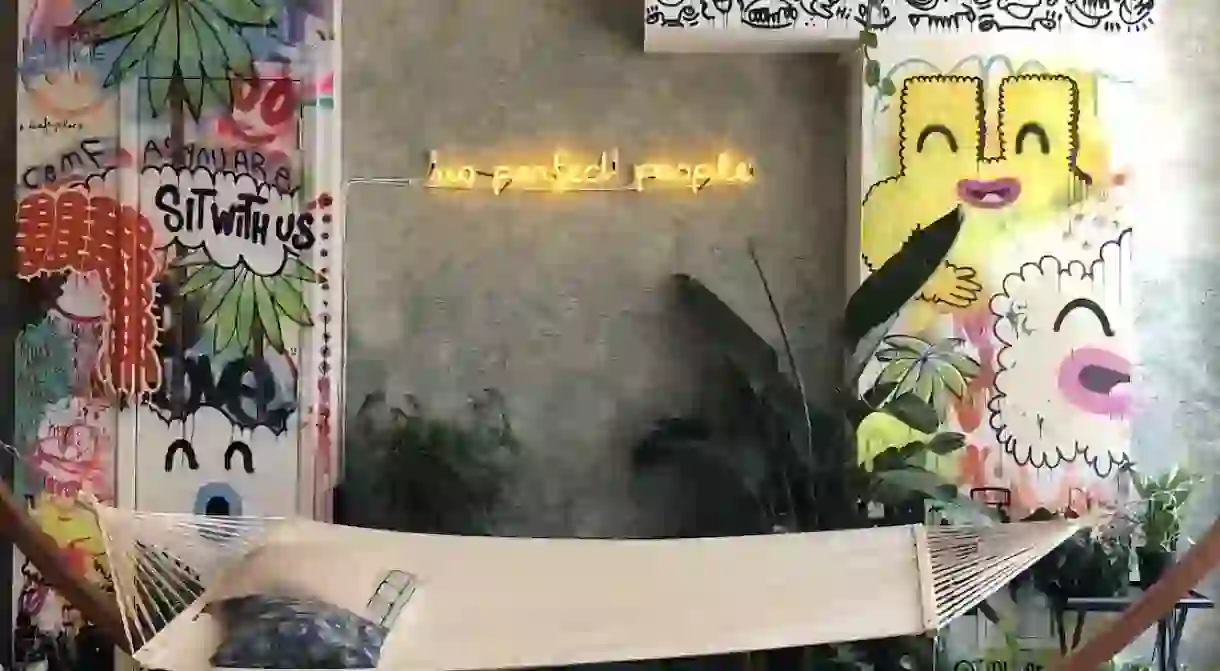This Radical Approach to Meditation Even Works for Mindfulness Skeptics

For those who find mindfulness dull, Radical Meditation’s New York pop-up offers a more intense route to inner peace.
On the third floor of a SoHo walk-up, a group of strangers meditates inside a tent made of draped sheets. Our arms are raised overhead while we practice “breath of fire” – a forceful exhale through the nose, belly snapping back towards the spine, followed by a passive inhale. There’s no opportunity for minds to wander; the rapidity of breath and white-hot lactic acid burning our triceps and shoulders keep us very much in the present moment.
This is Radical Meditation – a guided breathwork experience the website claims will “leave you feeling reset and connected to yourself,” enabling you to be “more in control of your life.” One testimonial even goes so far as to call the technique “life-changing stuff.”
Founder and CEO Branko Cerny honed his iteration of meditation after years studying various lineages and approaches – many of them linked to a specific religion.
“I find it very beautiful, the folklore and symbols around any spiritual tradition, but I realized it was a massive barrier to entry for most people,” he explains. “I didn’t see a secular, accessible experience and brand built for the rest of us. One that wouldn’t judge you for where you are today and what philosophy or aesthetic you subscribe or don’t subscribe to.”

The goal of Radical Meditation isn’t to sit quietly and pay attention to your thoughts as they come and go, or your breaths as they enter and exit your body. It’s an active practice that requires physical vulnerability.
“It’s constructed to enable anyone to reach a deep meditative state – the theta brainwave state – no matter how busy or neurotic their mind is,” Cerny explains. “It uses the power of the breath […] employing a variety of breathing and light movement exercises that each have its specific and empirically verified function.”
Studies show that intentionally manipulating the breath can reduce anxiety and depression and even increase positive self-awareness. One specific method, known as holotropic breathwork, can even induce psychedelic experiences that provide new insights and perspectives.
It’s this technique that brings Radical Meditation to a climax. The group reclines among squishy meditation pillows and begins a cycle of two sharp inhales – the first swelling the belly, the second expanding the chest – followed by a exhale of the same force and length. Cerny encourages us to maintain the rhythm and pace, even if our appendages get tingly and our thoughts become dream-like, and see where it leads us.

By the end I feel pleasantly lightheaded and calm. The friend I brought along tells me he doesn’t remember the past five minutes; he was completely in the zone. We float out of the tent and onto Moroccan poufs where we’re handed a herbal cocktail and begin to debrief on our experiences.
Radical Meditation is uncomfortable and overwhelming at times, but by creating sensation in the body through breath and movement, the mind is able to be fully present. It’s a shortcut to that natural, peaceful high that can take weeks of practice with your average mindfulness app.
“I think everyone needs some form of meditative, reflective practice. It’s like brushing your teeth, but for the soul,” Cerny says. “People seem to genuinely love the way Radical Meditation makes them feel. Our favorite kind of feedback is when someone says, ‘I could really feel myself, I felt clear on who I was and who I was supposed to be. I left with new life in my veins.’ That’s what we do this for.”
Culture Trip was a guest of Radical Meditation.













